Mother’s beads: How manekNya preserves and celebrates the Peranakan art of beading
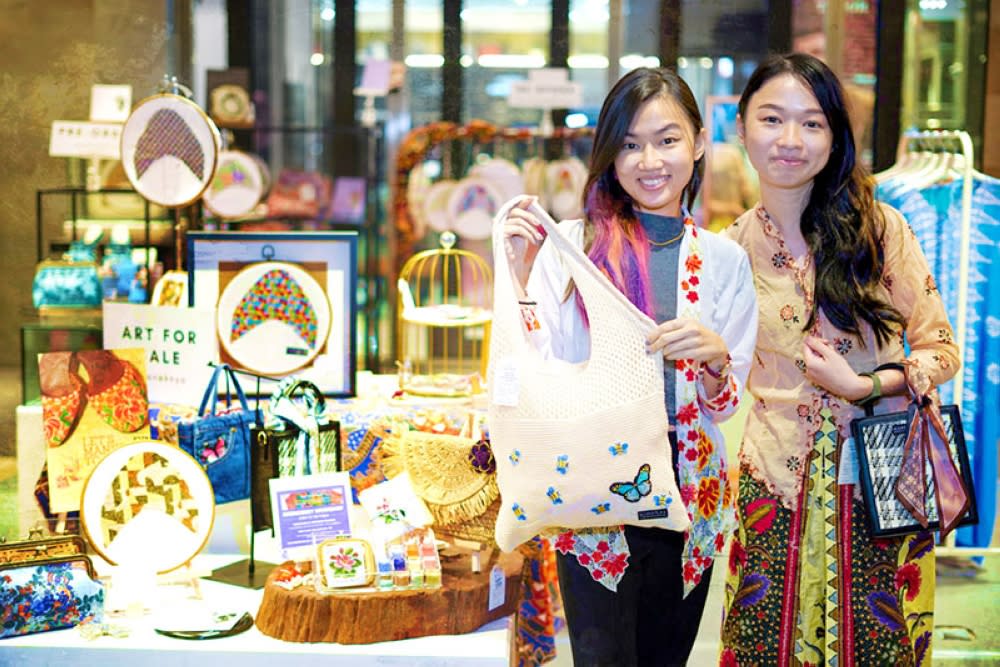
KUALA LUMPUR, July 20 — The shoes are elegantly designed and the detailed Peranakan beadwork delicate. These are painstakingly handmade by the artisans of manekNya, led by two sisters Lee Swee Lin and Lee Swee May.
The siblings are no strangers to starting a business from scratch. Swee Lin, 30, launched the meals-by-refugees start-up PichaEats eight years ago, while Swee May, 28, was part of the pioneer team involved in the opening of Genting SkyWorlds Theme Park.
With manekNya, the Lee sisters are pursuing a new project closer to home and their hearts.
Swee Lin shares, "Growing up, I always thought of the Peranakan or Baba Nyonya way of life as normal. The language that we speak, the food that we eat, etc. But as I grew up, I realised that is not the case.”
Together, they envisioned applying their skills to preserve a slowing-down culture, in particular to bring the Peranakan beading embroidery art back to prominence.
Sweet Lin explains that in the Peranakan dialect, manek means beads whilst Nya means mother, or in short: Mother’s Beads.
The name of their brand is meant to invoke the inspiration they found in their mother and late grandmother, as well as their deep roots in their Peranakan culture.
"About a year ago, we saw our mum sitting down very quietly in a corner. We got very curious about what she was doing. She told us that it’s Nyonya beading, a very intricate art embroidery which will be made into a pair of shoes called the kasot manek.”
The sisters had learned that a Nyonya will pair her kebaya and sarong with a pair of beaded shoes for special occasions. Swee Lin says, "We felt that beading is a captivating and rewarding art form. It would be such a waste to let it become a dying art.”
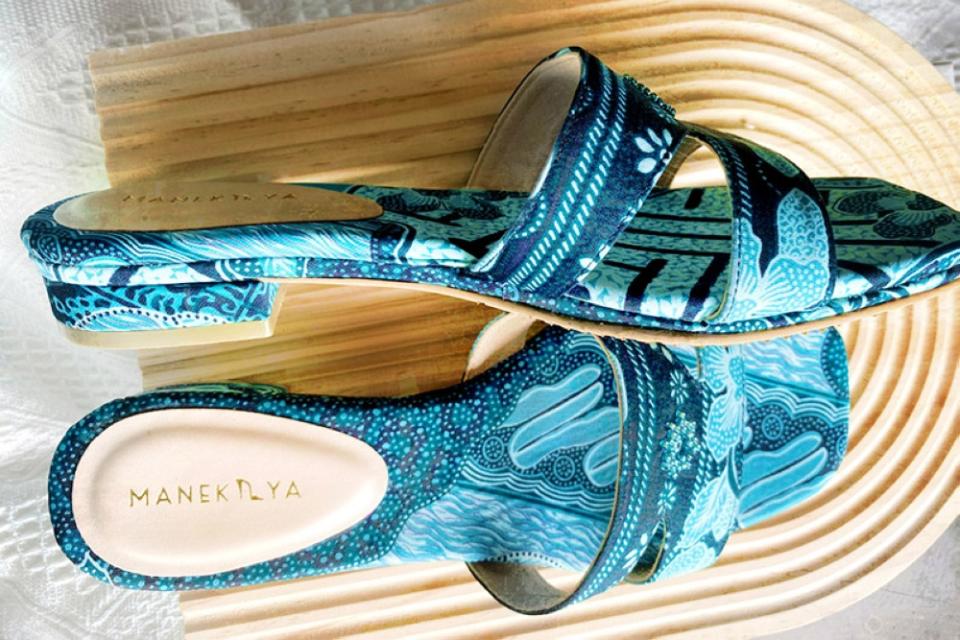
The first shoe collection called BiruNya mixed batik and beads embroidery.
Driven by the desire to preserve the Peranakan art of beading and share its beauty with a wider audience, the duo started manekNya to offer contemporary Peranakan beaded shoes (kasot manek) and lifestyle items.
They also conduct embroidery workshops for participants to learn this traditional craft from skilled artisans from under-represented communities (more on this later) and expert shoemakers in Malaysia.
"It would be unfortunate if future generations could only witness the exquisite art of Nyonya Embroidery only in museums or cultural centres. By showcasing the beauty and intricacy of this art form, we hope to bring a fresh and contemporary perspective to Peranakan beading.”
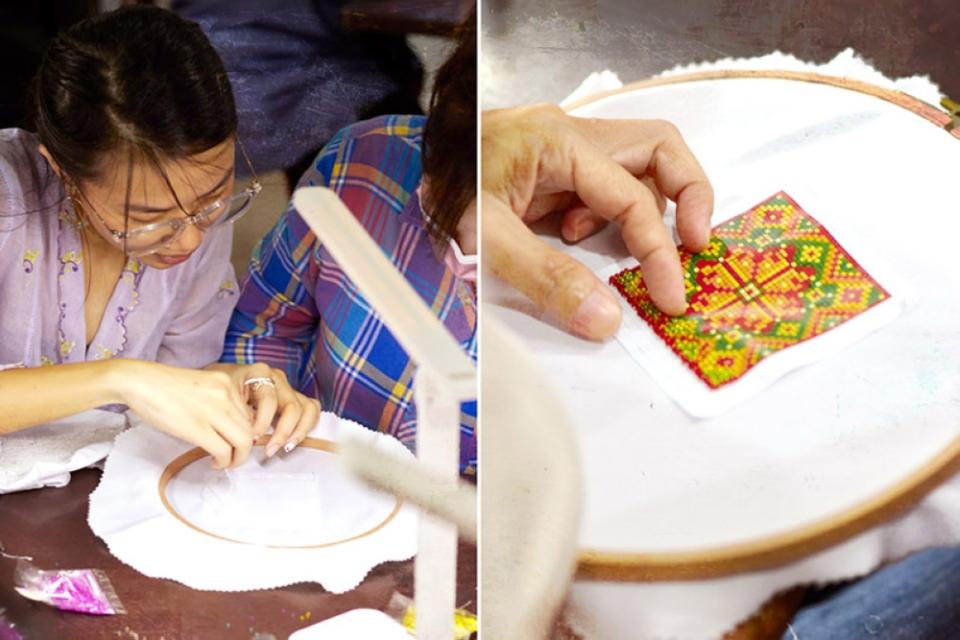
Patience and craftsmanship.
Already there has been some recognition: manekNya was a finalist in the Malaysia Fashion Creativity Award 2023, where Swee May had recreated the Peranakan fashion inspired by the Nyonya needlework of the kasot manek, using unwanted fabrics incorporated with bead embroidery.
The Peranakan art of beading differs from other styles of beading in that each bead has to be sewn in a single direction, ensuring the consistency and uniformity. Swee Lin shares, "Each bead has to be sewn one by one, carefully chosen to complement the overall design and enhance the visual impact of the piece.”
The beads used in Peranakan beadwork are made of glass, rather than plastic. These come in a wide array of colours and sizes, starting at 2mm.
The smallest beads that manekNya uses measure only 0.5 millimeter. Called the Diamond Beads, they are so tiny that their embroiderer in Melaka had to use a microscope to bead on the fabric!

The beads used in Peranakan beadwork are made of glass , not plastic.
Swee Lin says, "The beads that we use in manekNya are Miyuki and Czech Glass Beads. These are known for their exceptional quality and vibrant colours.”
Despite the heritage leanings, manekNya’s approach to their artistry is more contemporary. Swee Lin explains, "Traditionally, beadwork is usually made only into a pair of shoes. However, we wanted to integrate this into your lifestyle items, bringing a fresh and modern perspective of Nyonya beading.”
Their first collection called BiruNya is a line of shoes that combines the rich, intricate patterns of batik with the shimmering beauty of beads.
Swee Lin says, "From the kebaya’s batik sarong and the full beaded shoes, it’s everything we imagined that would capture the essence of Peranakan culture and history, while also being fashionable and functional for everyday wear.”
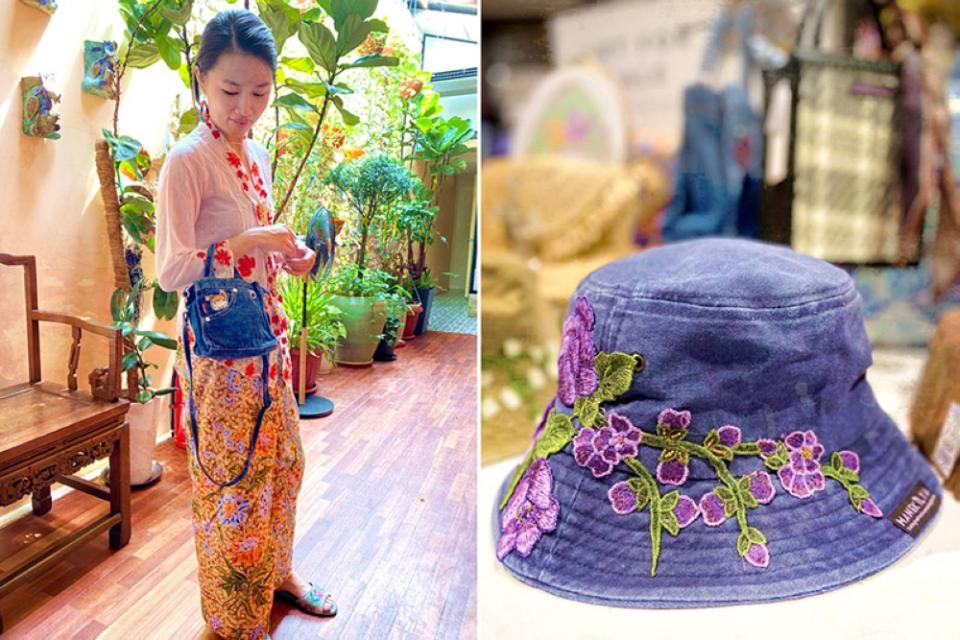
Upcycled jeans bag with embroidery influence (left). Embroidery bucket hat (right).
The sisters spent seven months working on perfecting the design, carefully selecting the specific shade of blue found in batik fabrics to represent the symbolic flower of Peranakan, the bunga telang (butterfly pea flower).
"The face of shoes has the word N which represents Nyonya. We also handpicked each bead, and hand-sewn it one by one ensuring that they would complement the pattern and add a touch of elegance and sparkle to the shoe.”
According to Swee Lin, their goal at manekNya is to conduct all aspects of their value and supply chain in a sustainable manner, from supporting our artisans to using eco-friendly materials.
She says, "All of our artisans are mostly stay-at-home mums who have to take care of their children. They come from various backgrounds, including residents of local low-cost flats and single mothers.”
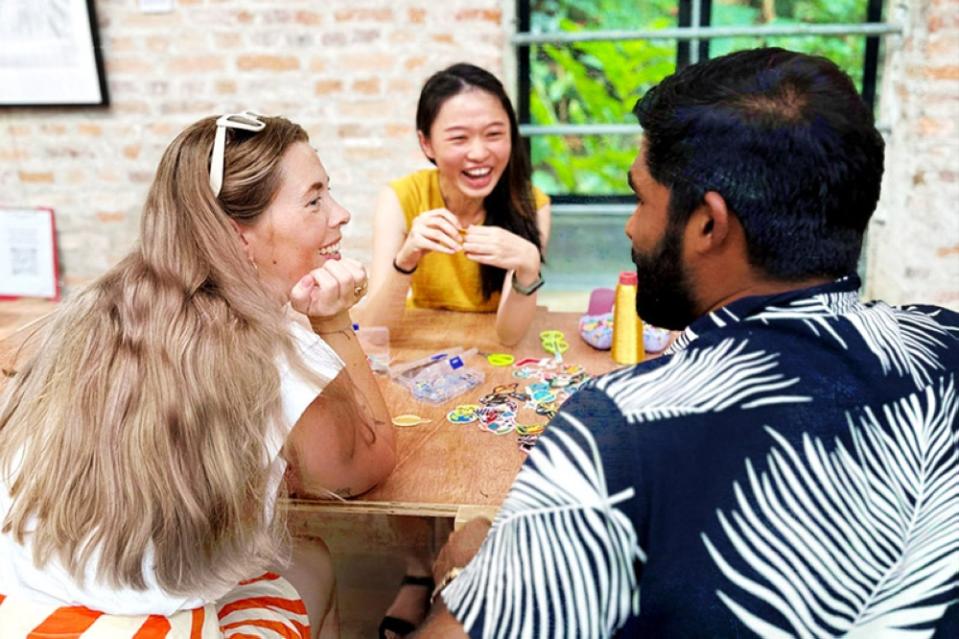
Enjoying a joke during a manekNya beadwork workshop.
With manekNya, they have the opportunity to work flexibly from the comfort of their homes. Swee Lin adds, "They are able to engage in embroidery work when their children are asleep or attending school. Before becoming our artisans, they have to go through eight weeks of training — approximately 240 hours of training with us.”
Currently, as part of their sustainability centric approach, 40 per cent of materials used in manekNya training are from used cloth.
Over 150 individuals have trained as manekNya artisans to date, thus helping to spread the culture of the Peranakan beading as well as upskilling under-represented communities.
Swee Lin says, "We feel that every culture is important and we hope that we are able to inspire the general public to embrace their traditional clothing, practice the cultural traditions within their households and communities, and reconnect with their roots.”
By preserving the Peranakan art of beading, manekNya reminds us that every cultural heritage is a live, active expression: invaluable and worth celebrating.
Learn more about manekNya at maneknya.com



